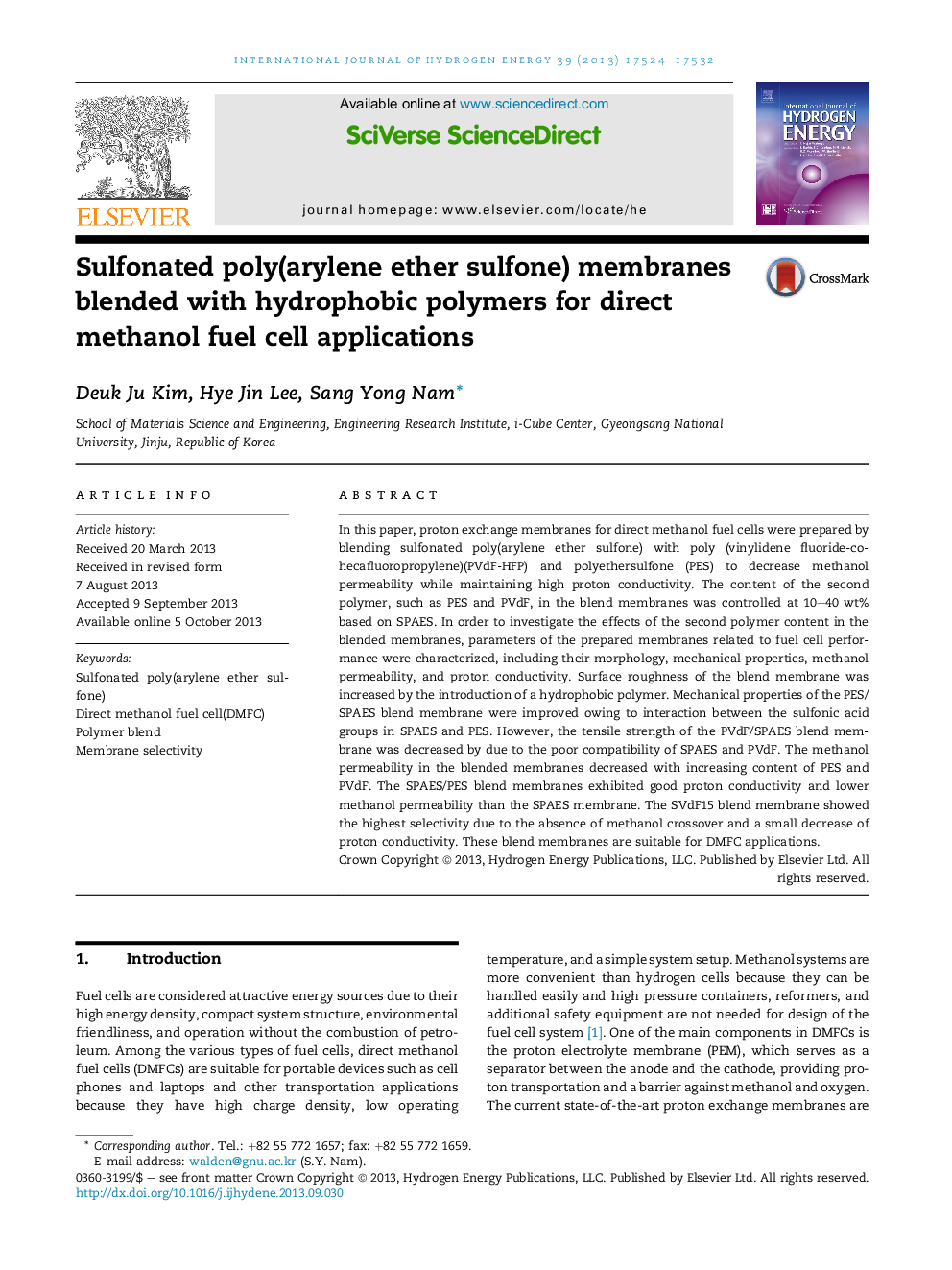| Article ID | Journal | Published Year | Pages | File Type |
|---|---|---|---|---|
| 1272215 | International Journal of Hydrogen Energy | 2014 | 9 Pages |
•Blending with hydrophobic phase.•Control of molar ratios of hydrophobic polymer and SPAES.•Miscibility between the selected SPAES and second polymer.
In this paper, proton exchange membranes for direct methanol fuel cells were prepared by blending sulfonated poly(arylene ether sulfone) with poly (vinylidene fluoride-co-hecafluoropropylene)(PVdF-HFP) and polyethersulfone (PES) to decrease methanol permeability while maintaining high proton conductivity. The content of the second polymer, such as PES and PVdF, in the blend membranes was controlled at 10–40 wt% based on SPAES. In order to investigate the effects of the second polymer content in the blended membranes, parameters of the prepared membranes related to fuel cell performance were characterized, including their morphology, mechanical properties, methanol permeability, and proton conductivity. Surface roughness of the blend membrane was increased by the introduction of a hydrophobic polymer. Mechanical properties of the PES/SPAES blend membrane were improved owing to interaction between the sulfonic acid groups in SPAES and PES. However, the tensile strength of the PVdF/SPAES blend membrane was decreased by due to the poor compatibility of SPAES and PVdF. The methanol permeability in the blended membranes decreased with increasing content of PES and PVdF. The SPAES/PES blend membranes exhibited good proton conductivity and lower methanol permeability than the SPAES membrane. The SVdF15 blend membrane showed the highest selectivity due to the absence of methanol crossover and a small decrease of proton conductivity. These blend membranes are suitable for DMFC applications.
